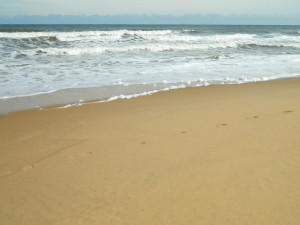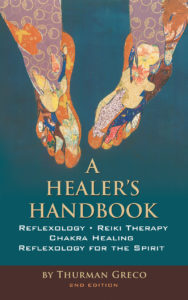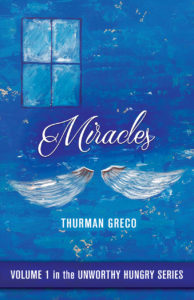Oil. Oil. And More Oil!
The next time you need to purchase olive oil, read the labels on the bottles, jars, and cans. Don’t just grab the container that’s on sale or the one on the end cap or the one with the prettiest label.
I recently did a study on olive oils. I wanted this information for myself and to share with my client partners and you, my readers. Boy, did my eyes get opened WIDE!
Most olive oils on grocery store shelves are imported. The names on the labels evoke history, romance, travel to exotic places. Stand in front of the olive oil display for a couple of minutes and your brain may even wander to skin, water and summer moons:
Bertolli
Pompeiian
San Leandro
Filippo Berio
Taste Inspirations
Nature’s Place
DeCecco
Buonaturae
Spectrum
Olivari
Botticelli
l could go on and on. The least inspiring labels were Rachel Ray, Spectrum, and Hannaford’s.
When you finish reading those labels, you’re going to probably be thinking more about travel than anything else. Imported olive oils are mostly a blend of oils from many different countries:
Argentina
Australia
Chile
Egypt
Greece
Italy
Morocco
Spain
Tunisia
Turkey
Uruguay
U.S.
The average label listed 5 countries for the oil of origin. When an olive oil company blends so many oils from so many places, I feel that things get confusing. How can there be controls, health guidelines on a product coming from countries all over the world? And, truth be known, there are no controls on imported olive oil. The blend may not even be olive oil.
Oliveri oil comes from Italy, Greece, Spain, Turkey, Tunisia, and Morocco.
Pompeiian oil claims to have oil in its bottles from Italy, Greece, Spain, Argentina, Tunisia, Turkey, Morocco, Chile, U.S., and Egypt.
The only olive oil I buy and trust is organic American Extra Virgin Olive Oil. Olive oil is a food which can be therapeutic. If I’m eating something partially because of its therapeutic qualities, I want to know that I’m getting what I pay for. And, let’s face it, olive oil is not cheap. I want it to be organic and I want it to be EVOO and I want it to be what the label says it is.
When I read the labels, I discovered that most of the companies with these romantic sounding names claimed to use oils from most every country. There were some exceptions:
Pompeiian produces several different olive oils. One is American and 1 is Portuguese.
Carapelli, DeCecco, and Buonaturae sell pure Italian olive oils.
Taste of Inspirations has an oil from Italy and an oil from Greece.
San Leandro’s oil comes from Spain.
As far as my research leads me, the only Sicilian olive oil comes from Trader Joe’s.
The principal oil used in my kitchen is organic American Extra Virgin Olive Oil because medical experts believe that it is a good food to help prevent several diseases which I’m not interested in dealing with:
cancer
heart disease
high blood pressure
osteoporosis
rheumatoid arthritis.
There’s a method to this. In order for your EVOO to be therapeutic, you need to use an EVOO regularly enough to consume about 2 large spoonfuls daily. This means you’re going to cut out some less desirable oils. An easy way to do this is to substitute olive oil for margarine, butter, peanut oil.
Olive oil is a monounsaturated fat – a healthy dietary fat.
You may not even know it but your EVOO is a heavyweight in your kitchen. It’s important on your reflexology table too. When your client partner voices dietary health concerns, this is your opportunity to share the health benefit information. One of the easiest ways to begin to eat healthy is to rely on American organic extra virgin olive oil.
ENJOY!
Thanks for reading this blog/book.
Please refer this article to your preferred social media network.
Don’t forget to join the email list.
Thurman Greco
The Actual Beginnings of Reflexology are Shrouded in Mystery
 In this post, we’ll begin to explore the roots of this age old modality.
In this post, we’ll begin to explore the roots of this age old modality.
What we do know is that early history refers to reflexology in China, India, Japan, Egypt, Greece, North Africa, the Arabian Peninsula, the Mediterranean, South America and North America.
Historians tell us that Egyptians practiced both hand and foot reflexology as early as 2500 BC. If you ever travel to Egypt, please visit the burial ground at Saqqara. The Physician’s Tomb there has a famous wall painting showing two people receiving reflexology. One is receiving hand reflexology and the other is receiving foot reflexology. This painting dates back to 2300 BCE.
If you ever visit Japan, be sure to visit the Medicine Teacher Temple in Nara. There you’ll find a stone carving depicting the soles of Buddha’s feet in a carving dating to 790 AD. In Buddhist tradition, the feet (or foot prints) represent his entire being. For centuries after the Buddha’s death, people did not recreate images of the great teacher’s face or body. But, eventually artists began producing images of his feet – representing the whole spiritual being to be revered.
Also, in India there are paintings of Vishnu, the Hindu god’s feet with symbols corresponding to several reflexology points.
By the time these famous wall paintings and carvings came to be a reality, reflexology was already an accepted healing modality in much of the world.
Reflexology has been recorded in ancient Chinese writings describing pressure being applied to fingers and thumbs.
Ayurveda is an ancient Indian form of medicine which is becoming popular in our country. Reflexology is incorporated in Ayurvedic medicine.
In the next blog, I’ll relate recent reflexology history and bring us up to the present.
Thanks for reading this post. Please comment with any questions you have, etc.
Peace and food for all.
Thurman Greco







